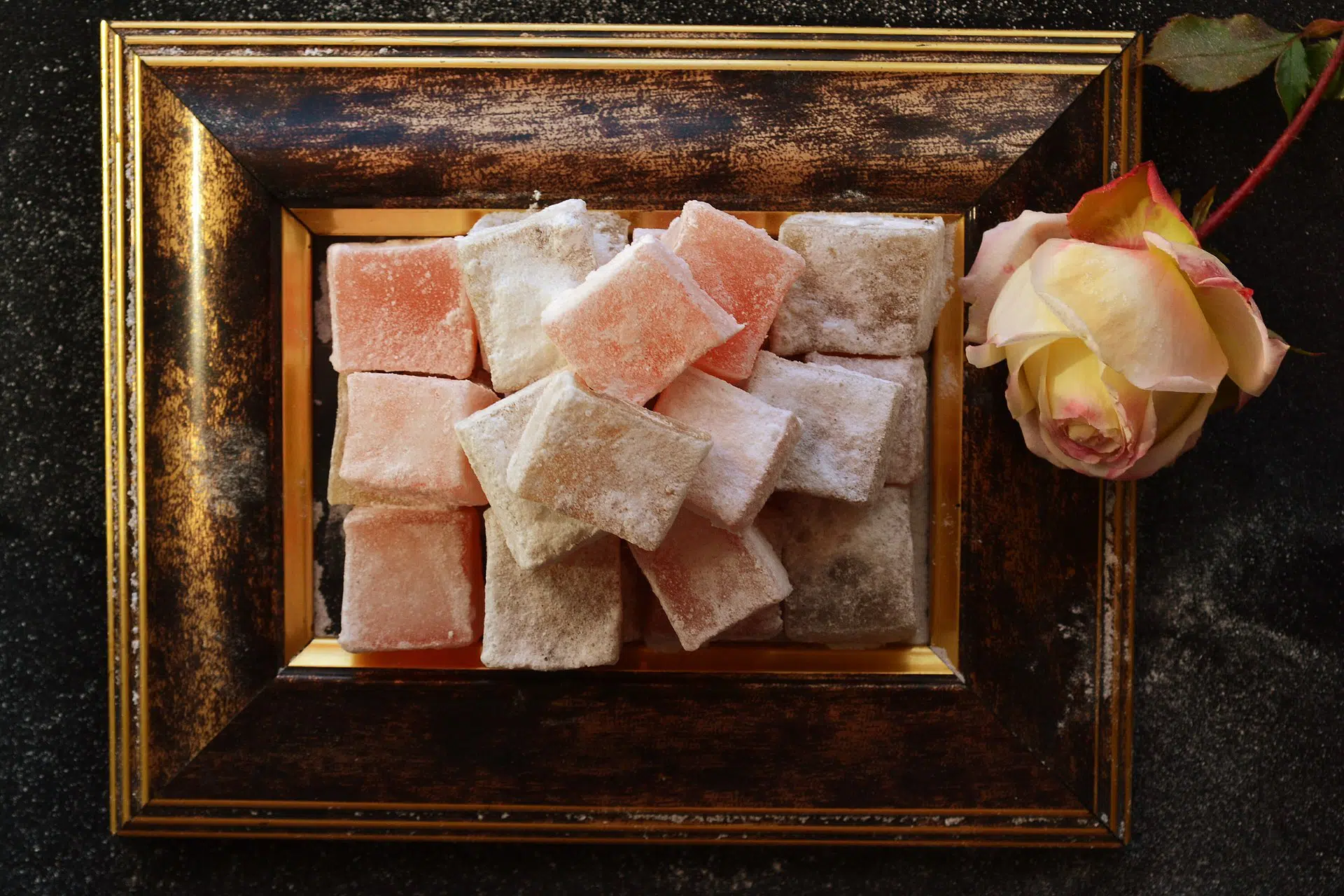
Greek loukoumia, or Turkish delights, hold an important place in the world of Greek sweets. The delectable, soft little squares of sweet flavor coated in powdered sugar are an iconic symbol of Greece.
In Greece and Cyprus, loukoumia, the plural of loukoumi, are a traditional sweet offered with coffee. In many villages across the country, visitors are welcomed into the homes of locals with an offering of the delicious gelatinous confection.
Made from the simple ingredients of water, starch, and sugar, and flavored with iconic tastes of Greece like rose, bergamot, and mastiha, loukoumia are easy to make but difficult to perfect.
The delicate squares of flavored gel coated with sugar are often filled with nuts like pistachio, or served plain.
Variations of loukoumia are found around the world
The magic of the confection, variations of which are found in Greece, Cyprus, and Turkey, but also throughout the Balkans, the Middle East, and North Africa, comes from its flavor and gelatinous texture.
A flavor too strong is overwhelming and cloyingly sweet while one too faint defeats the purpose of the Greek loukoumi.
The art of making loukoumia is finding the balance of flavor. The best, most traditional recipes for the sweet include naturally-derived extracts like rosewater, which imbue the confection with a wonderfully nuanced flavor.
Although they are called Turkish delights around much of the world, the origin of these sweets may come from farther East, namely from Persia or the Arabian Peninsula.
Mysterious origins of “Turkish Delights”
Some believe that the Turkish word for the sweet, “lokum,” derives from the Arabic “al-lukum,” which means “morsel” or “mouthful,” while others argue it comes from the Arabic phrase “rahat al-hulqum,” or “throat comfort.”
In Turkey, the confectioner Haci Bekir is thought to be the first person to have created the sweet in the 18th century although there are records of the confection in Persia and Arabia from centuries earlier. Bekir’s descendants still produce loukoumia five generations later.
Food historians generally dismiss the tale as a kind of legendary advertisement, and, considering the fact that the Bekir confectionery is still one of the most popular in Istanbul, it worked very well.
While the exact origin of the sweet is debated, the Ottomans brought it around the world with them as they conquered swaths of land in the Balkans, Middle East, and North Africa.
Areas known for delectable loukoumia
Although found in many parts of the world, certain areas of Greece and Cyprus are known internationally for their delicious loukoumia.
The island of Syros, located in the Cyclades, is said to have some of the loukoumia in the world. In the early 19th century after the Greek War of Independence, Syros exported mounds of the sweet to loukoumi lovers across Europe and Asia.
Similarly, the loukoumia from the Greek city of Patra are so famous they have their own name—”Patrina Loukoumia.”
The loukoumia produced in the town of Geroskipou, Cyprus are the only confections of the kind that have received a protected geographical indication by the European Union.
See all the latest news from Greece and the world at Greekreporter.com. Contact our newsroom to report an update or send your story, photos and videos. Follow GR on Google News and subscribe here to our daily email!



